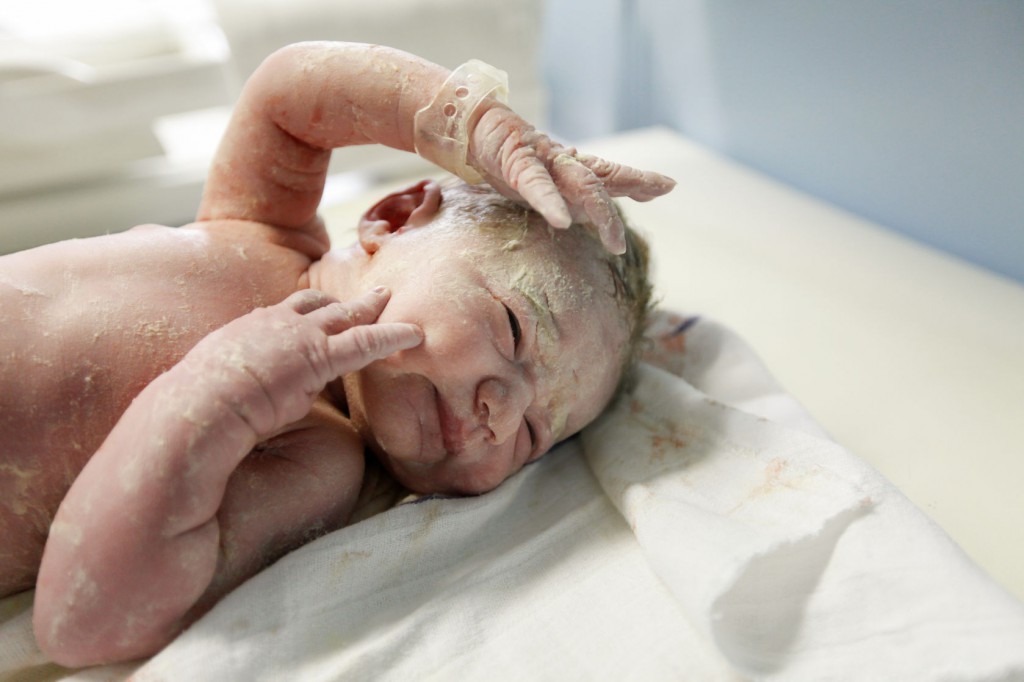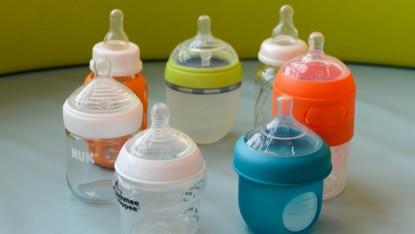Lots of things happen after the baby is born. While it might feel like the hard part is over for your body, some procedures and testing are still left for your new little arrival. While the process and procedures may vary slightly from state to state or hospital to hospital, it is safe to assume that most of the following will be part of your baby's first day of life. It helps to familiarize yourself with these procedures so you understand what is happening, why it might be necessary, and what your first role as a parent and decision-maker is going to be.
Post-Birth Procedures
- Apgar Scoring — While not an invasive procedure, this is one of the first things done in a baby's first 5 minutes of life to assess their well-being. A score of 0 to 2 is given at both 1 and 5 minutes on the following criteria: Heart Rate, Respirations, Muscle Tone, Color, and Reflex Irritability.
- First Bath — Baby will receive a simple bath after birth with water and mild soap to wash off vernix and blood from their skin. Provided that both newborn and mother are medically stable, it is best to wait to clean the baby until the first breastfeeding session has occurred (preferably within 1 hour of birth) to promote bonding. If you make your preference known ahead of time, this can be accommodated.
- Vitamin K injection — Vitamin K is essential for blood clotting. A deficiency will cause bleeding. Shortly after birth, your baby will receive a single Vitamin K injection intramuscularly (IM) to prevent hemorrhagic disease of the newborn. This condition classically presents between 24 hours and one week after birth as bleeding from the umbilicus, GI tract, skin, and circumcision sites. This condition can also present two weeks to 6 months after delivery as a late-onset disease (1 to 20 cases/100,000 births), with 50% of cases marked by intracranial hemorrhage associated with high morbidity. Multiple doses of oral vitamin K in the first two months of life have not been shown as effective in preventing late-onset disease and are not recommended.
- Eye Prophylaxis — An antibiotic ointment, usually Erythromycin, is placed in each eye to prevent neonatal bacterial conjunctivitis, namely gonococcal infection. This infection can quickly cause blindness in the newborn.
- Hypoglycemia Screen — If the baby is small or large for gestational age, symptomatic (ill-appearing or jittery), or needed resuscitation at birth or the mother has insulin-dependent diabetes, a blood glucose level will be checked to make sure the baby is not hypoglycemic with low blood sugar. This test is typically done via a heel prick or venipuncture.
- First Hepatitis B Vaccination — Early Hepatitis B immunization is recommended and is commonly done soon after birth.
- Hearing Screen — A basic hearing test called an Otoacoustic Emissions (OAE) is done before discharge to screen for a potential hearing deficit. If the baby does not pass on one or both sides, they will be referred for an outpatient hearing screen.
- Newborn Metabolic Screen — Blood is taken from the baby 24 hours after birth by heel prick to screen for a list of genetic conditions per individual state mandates. Some states perform an expanded newborn screen to test for more than the 26 core disorders. If your state is not included in this list, you can have this done privately at your own expense.
- Bilirubin Measurement — A transcutaneous bilirubin measurement is done initially by running a simple meter, much like a temporal thermometer, over the baby's skin, usually between 24 to 48 hours to measure bilirubin level to assess for risk of newborn jaundice. If this value is elevated, in question, or the baby appears jaundiced, blood will be taken by heel prick (often during the newborn metabolic screen) for a more accurate measurement. Your baby's care provider will plot this number on a nomogram to determine their level of risk, and if high, they will decide which type of intervention is needed.
- Blood Type and Coombs Test --If mom has blood type "O" and/or is Rh-negative, baby's blood will be sent for typing and direct Coombs from the umbilical cord blood. If the mom is Rh-negative and the baby is Rh-positive, the mom will receive an additional dose of Rhogam (first was received around 28 weeks) to protect a future fetus. If the baby has a different blood type than the mother, that is, type "A," "B," or "AB,"AND the direct Coombs test is positive; this is called ABO incompatibility. This incompatibility increases the risk for newborn jaundice as maternal antibodies are hemolyzing (breaking apart) the baby's red blood cells more quickly than expected. The baby will then have a heel stick around 24 hours to check a total bilirubin level to decide if and what intervention is needed.
- Congenital Heart Disease Screen — A non-invasive pulse oximeter will be placed on the baby's foot before discharge to measure the baby's oxygen saturation and the amount of oxygen in the blood.
- Circumcision — If you have a boy, the topic of circumcision will be brought up as a procedure that is routinely done in the hospital before the baby's discharge. For further information, please follow this circumcision link, which covers this topic within BabyGearLab's Pregnancy Essentials: Third Trimester article.




